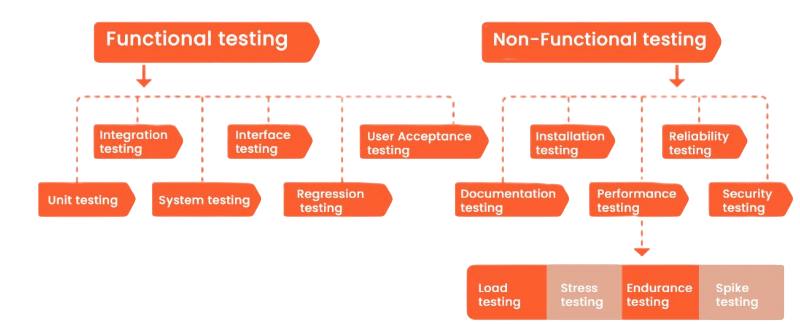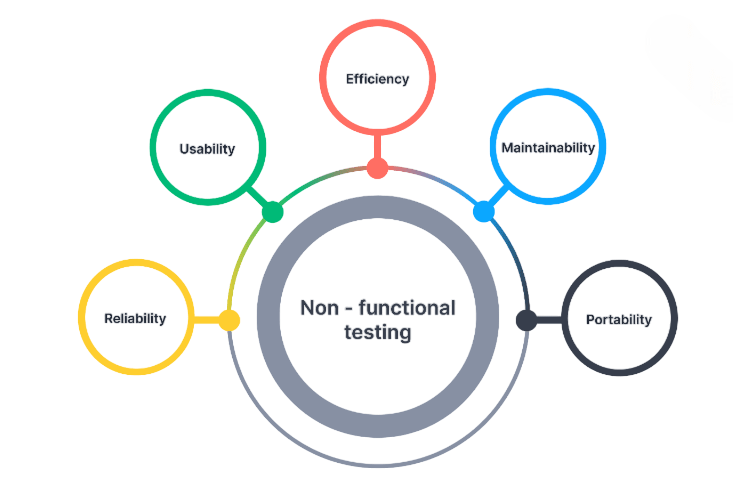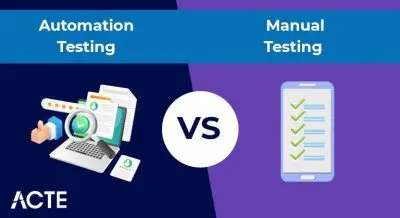
- Introduction to Software Testing
- Why Different Testing Types Matter
- Functional Testing
- Non-Functional Testing
- Manual Testing
- Automation Testing
- Unit Testing
- Conclusion
Introduction to Software Testing
Software testing is far more than a technical step in the software development lifecycle; it serves as a foundational pillar for delivering reliable, efficient, and user-focused products. In today’s technology landscape, where applications span across mobile devices, cloud infrastructures, and complex enterprise systems, users expect seamless, glitch-free experiences. Testing ensures that software applications not only remain free of critical bugs but also perform optimally under diverse conditions such as varying network speeds, device types, and user loads. It helps confirm that the product meets all functional requirements as well as adheres to business rules and workflows designed to deliver value to end-users. Beyond simply identifying defects, the scope of software testing extends into validating compliance with legal and regulatory standards, which is especially crucial in sensitive domains like healthcare, finance, and government. Performance testing evaluates whether applications maintain acceptable response times and stability under stress, while usability testing ensures the product is intuitive and user-friendly. These diverse quality checks safeguard the reputation of the brand by enhancing user satisfaction and trust. In the modern development ecosystem, software testing plays an integral role in DevOps and Continuous Integration/Continuous Delivery (CI/CD) pipelines. Automated and manual tests are embedded at multiple stages—from code commits to production deployments—allowing teams to identify and address issues early. This continuous feedback loop accelerates development cycles without compromising quality. As a result, organizations can release features faster, reduce costly post-release defects, and maintain agility in a competitive market. In summary, software testing acts as a critical enabler of quality assurance that encompasses technical validation, compliance, performance, and user experience, ensuring that software products align perfectly with both business goals and user expectations.
Do You Want to Learn More About Software Testing? Get Info From Our Software Testing Training Course Today!
Why Different Testing Types Matter
Every type of software testing targets specific risks or quality attributes, and relying on only one or two testing methods can leave critical gaps in coverage. For example, a banking application must undergo thorough functional testing to verify accurate transaction processing, security testing to protect sensitive financial data, and performance testing to ensure the system can handle high volumes of transactions without delays or failures. Missing any of these aspects could lead to severe consequences such as financial loss, data breaches, or customer dissatisfaction. Similarly, a video conferencing platform faces unique challenges that require a combination of performance, usability, and integration testing. Performance tests evaluate the system’s ability to maintain call quality during fluctuating internet speeds or network congestion. Usability testing ensures the interface remains intuitive and accessible for users across various devices.

Integration testing is essential for verifying seamless communication between the platform and external APIs like calendar apps, messaging services, or third-party plugins, which collectively impact the user experience. E-commerce websites also illustrate the importance of combining multiple testing types. Functional testing guarantees that core features like product searches, payment processing, and order management work correctly. UI testing ensures that the site remains visually consistent and user-friendly, especially during peak traffic periods such as product launches or seasonal sales. Regression testing helps confirm that new updates or bug fixes do not unintentionally break existing functionality, maintaining a smooth shopping experience. These examples highlight how diverse testing types complement each other, working in harmony to uphold product quality, minimize failures, and ultimately satisfy end-users. An effective testing strategy recognizes the unique demands of each application domain and applies a balanced mix of testing techniques to deliver robust and reliable software.
Functional Testing
- Purpose of Functional Testing: Functional testing focuses on verifying that the application behaves according to business requirements or user stories. It is concerned with what the system does, not how it does it. The goal is to ensure that every feature performs as expected from the user’s perspective.
- Black Box Testing Approach: This type of testing treats the application as a black box. Testers do not consider the internal structure or code. Instead, they input data and observe outputs to determine if the system meets requirements.
- Validation of Real-World Scenarios: Functional testing often mirrors actual user behavior. For instance, testing an “Add to Cart” feature in an e-commerce site would involve checking whether clicking the button adds the right product, displays it correctly, and updates the total cost.
- Tool Support – Selenium: Selenium is commonly used for automating functional tests at the UI level. It simulates user interactions such as clicks, form submissions, and navigation, ensuring the front-end behaves correctly.
- Tool Support – Postman: Postman is widely used for functional testing of APIs. It verifies whether API endpoints return the correct responses, handle parameters properly, and follow the expected logic.
- Tool Support – SoapUI: SoapUI is used for functional testing of SOAP and REST web services. It allows testers to validate request-response cycles, test complex API workflows, and assert data correctness.
- Importance of Functional Testing: Without functional testing, applications may appear complete but fail in core operations. It ensures features work reliably, earning user trust and preventing major issues after release.
- Purpose of Non-Functional Testing: Non-functional testing assesses the quality attributes of a system rather than its specific behaviors. It ensures the product performs well under various conditions and meets standards for speed, security, usability, and scalability.
- Performance Testing: This type of testing evaluates how well an application responds under expected or peak load. For instance, Netflix uses performance testing to ensure seamless streaming without buffering, especially during high-traffic times like evenings or global events.
- Security Testing: Security testing identifies vulnerabilities, threats, and risks in an application. HealthTech applications, for example, must comply with regulations like HIPAA. These apps undergo rigorous security assessments to ensure patient data is protected from breaches.
- Usability Testing: Usability testing focuses on the user experience. Platforms like Airbnb conduct detailed usability studies to ensure that users can easily navigate and complete tasks. A clean, intuitive interface often directly impacts user retention.
- Scalability Testing: Scalability testing checks how well an application can handle growing numbers of users or transactions. Zoom, for example, performs scalability testing to support over a million concurrent users during peak virtual learning sessions or webinars.
- Consequences of Skipping Non-Functional Testing: Ignoring non-functional testing can lead to application crashes, poor performance, legal penalties, or data breaches. It directly affects user satisfaction and trust in the product.
- Impact on Brand and Revenue: A well-functioning product that lacks quality attributes can still fail in the market. Issues like lag, poor security, or a confusing UI can damage brand reputation, reduce customer loyalty, and result in financial loss.
- Boosts Speed and Efficiency: Automation significantly reduces the time required to run repetitive test cases. It enables faster feedback during development cycles, which is essential in Agile and DevOps environments.
- Supports Continuous Testing: In CI/CD pipelines, automation ensures tests are executed consistently with every code change. This supports early detection of defects, enabling teams to deliver reliable software faster and with greater confidence.
- Cross-Browser and Cross-Device Coverage: Automation tools like Selenium and Appium help test applications across multiple browsers and devices. This broadens test coverage and ensures the application behaves consistently for all users, regardless of their environment.
- Popular Automation Tools: Selenium automates web browser actions, TestNG/JUnit organize tests with annotations, Appium extends Selenium for mobile automation, and Cypress provides fast JavaScript-based testing with built-in waits.
- Challenges of Automation: Despite its benefits, automation comes with challenges like high initial setup time and the need for programming skills. Testers must be proficient in scripting languages and familiar with test frameworks.
- Maintenance Overhead: Automation scripts require frequent updates, especially when the UI changes. This maintenance can be time-consuming and may offset some of the speed benefits if not managed properly.
- Long-Term Advantages: When implemented effectively, automation reduces manual effort, speeds up regression testing, enhances test accuracy, and improves team productivity ultimately leading to faster releases and better-quality software.
Would You Like to Know More About Software Testing? Sign Up For Our Software Testing Training Course Now!
Non-Functional Testing

Manual Testing
Manual testing adds a crucial human dimension to the quality assurance process, enabling testers to apply creativity, intuition, and observational skills that automated scripts cannot replicate. Testers manually explore the application to identify UI inconsistencies, usability issues, and subtle bugs that often escape automated checks. This hands-on approach is especially valuable in early-stage startups where resources are limited, and rapid changes to the application require flexible, adaptive testing methods. Manual testing excels in handling complex user interface flows that frequently evolve. It allows testers to navigate these flows dynamically, uncovering edge cases and ensuring new features behave as expected. Exploratory testing, a subset of manual testing, enables testers to investigate areas of the application without predefined scripts, encouraging the discovery of unexpected issues that scripted tests might miss. Additionally, manual testing plays a vital role in validating visual layouts, ensuring design consistency, and verifying multilingual content to meet global user needs. Effective manual testers possess strong analytical skills and a deep empathy for end users’ journeys. They understand how real users interact with the product and can anticipate potential pain points. Moreover, proficiency in writing clear and comprehensive test cases, as well as executing them systematically, is essential to maintain testing discipline and traceability. Familiarity with defect tracking tools such as Jira or Bugzilla helps testers log issues accurately, facilitating effective communication with development teams. While automation is critical for scalability and repeatability, manual testing remains foundational especially when automation setup costs are prohibitive or the application undergoes frequent changes. It ensures quality from a human perspective, bridging gaps that automation alone cannot address, and helps deliver a product that truly resonates with users.
Gain Your Master’s Certification in Software Testing by Enrolling in Our Software Testing Master Program Training Course.
Automation Testing
Unit Testing
Unit testing is a fundamental practice that enforces modular thinking by encouraging developers to break down code into small, manageable pieces that can be tested independently. This approach helps catch bugs at the earliest stage, often before the code is integrated into larger systems, making unit testing the first line of defense against faulty software. To maximize effectiveness, unit tests should be designed to remain independent and isolated, ensuring that one test’s outcome does not affect another’s. This isolation is typically achieved by using mocks or stubs to simulate dependencies such as databases, APIs, or other external services, allowing tests to focus solely on the functionality of the unit under test. A best practice in modern software development is to write unit tests alongside the code itself, often following the Test-Driven Development (TDD) methodology. In TDD, tests are written before the actual implementation, driving the design and improving code quality. By catching defects early, unit testing reduces the cost and effort required to fix bugs compared to finding them during later stages like integration or user acceptance testing. Unit tests also boost developer confidence by providing immediate feedback when code changes are made, enabling safer and more frequent code refactoring. This, in turn, supports continuous integration (CI) practices where code is regularly built and tested, helping teams maintain a stable codebase. Moreover, well-written unit tests serve a dual purpose as living documentation, clarifying the intended behavior of the code and helping future developers understand and maintain the system effectively.
Conclusion
Mastering the various types of software testing equips development and QA teams with the agility and resilience necessary to build applications that are scalable, secure, and high-performing. Each testing type plays a unique role in the software quality ecosystem. Whether you are a manual tester meticulously validating UI responsiveness or an automation expert developing comprehensive regression suites, every testing approach contributes to the overall health and reliability of the product. By strategically investing in a balanced mix of testing methodologies ranging from functional and performance testing to security and usability testing organizations can significantly reduce the occurrence of costly bugs after release. This not only saves time and resources but also fosters user trust, ensures regulatory compliance, and supports the scalability required for future growth. In today’s fast-paced technology landscape, where applications span diverse platforms and user demands evolve rapidly, a strong foundation in traditional testing types is crucial. Emerging trends such as AI-driven testing, autonomous testing, and fully integrated continuous testing pipelines are becoming standard practices in many organizations. These advanced methods build on core testing principles to accelerate development cycles, enhance test coverage, and improve defect detection accuracy. Understanding the fundamentals of various testing types ensures that teams remain future-ready and capable of adapting to new tools and methodologies as they arise. This comprehensive knowledge empowers teams to make informed decisions about where to focus testing efforts, optimize resource allocation, and deliver high-quality software that meets or exceeds user expectations. Ultimately, mastering software testing types is a key driver of product success in an increasingly competitive and dynamic market.




